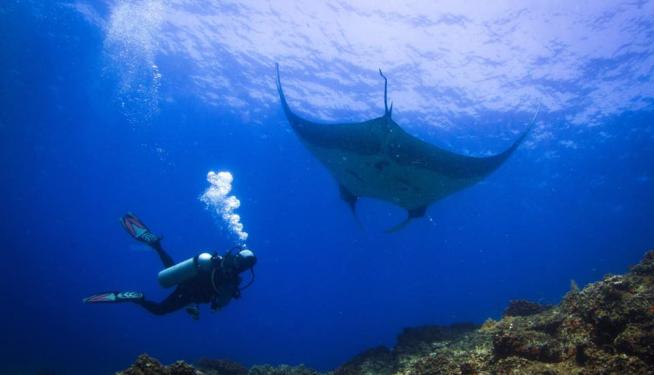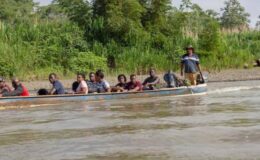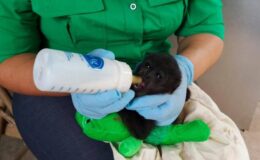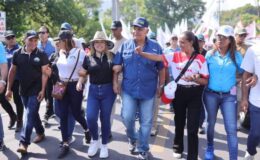
Mysteries and Beauty of the COIBA preserve studied and shown to world.
- By : James Bryson
- Category : Conservation, Human Interest

https://www.laestrella.com.pa/cafe-estrella/ciencia/220603/mirada-profunda-cordillera-coiba
Using underwater strategies and near-surface video cameras, a pioneering international team documented the mountains of the marine reserve.

Sharks, lobsters and abundant soft corals were some of the species that scientist Héctor Guzmán observed from a submarine, on the first scientific expedition to the mountains of the Coiba mountain range.
The marine ecologist and researcher associated with the Smithsonian Tropical Research Institute (STRI) and the Coiba AIP Research Station, remained on the high seas for 13 days along with colleagues, students, a journalist and a videographer-filmmaker, documenting his findings.
“We sailed three days from one place to another. We spend 10 days exploring 4 seamounts. The first crosses the 5th parallel, which is the limit of the exclusive economic zone between Colombia and Panama. It is the shallowest part of the mountain range and it borders Colombia. The shallowest part of this first mountain is 180m-150m deep and continues up to at least a thousand meters”, explains Dr. Guzmán, who is also a member of the National Research System (SNI) and the scientific group MigraMar. .
The Cordillera de Coiba is a mountain chain that rises from the mainland where Coiba is and continues south towards the Malpelo Islands, joins towards the Galapagos and then towards Cocos.

Panama fulfilled its commitment to protect 30% of its oceans by the year 2030 when, in 2021, it expanded the area of this reserve from 17,223 km2 to almost 68,000 km2, based on scientific evidence on the biological connectivity in this marine corridor of the Eastern Pacific, which includes Ecuador, Colombia, Panama and Costa Rica.
With the expansion, seamounts were included that were not included before, many of these range between 150m to 200m and up to 4,000m deep.
Seamounts are highly productive areas, their nutrient-rich waters attract large numbers of fish, sharks, and migratory species such as turtles and whales.
Exploration

From the submarine with capacity for three crew members –the pilot and two observers– they photographed and recorded videos of the species seen. The ship is certified to dive to depths of 450m and has a robotic arm to collect samples. The team explored up to 355m deep.
“We did 11 dives and collected many samples of corals, soft corals, like these sea fans, some very pretty yellow, orange, very abundant below,” says the researcher, showing images on his laptop. “We also collect rocks for geologists.”
Every day, three times a day, they placed several Remote Underwater Video (BRUV) bait systems, which are hung on buoys 10m deep to attract pelagic species (living in shallow waters). medium or near the surface), top predators.
“They come closer and we can film them, that gives us an idea of their abundance and size because we use stereoscopic video of the animal. We can get an idea of the diversity of these highly migratory species,” says Dr. Guzmán. Simultaneously, on the surface, the rest of the team was also filming.
“We exceeded 800-900 hours of video, stereoscopic videos and almost 450 hours of 360-degree video were made with the BRUVs. In the first days that we were in the shallower mountains, almost every day and in all the cameras, huge numbers of sharks came out, schools of hammerhead sharks, we were able to count up to 60 animals and, as we started to move north, at a second mountain whose top was around 220m and dropped to at least 1,500m, the sharks on the surface began to decrease in number. However, we saw juveniles in the lower part and when we descended to less than 300m, we saw a large number of tiny orange lobsters, which are food, especially in the stages of these juveniles”.
On a mountain they found the Prickly shark, which can reach the surface, but is usually abundant in deep water. Its biology is not known, nor is much known about its conservation status.
“Not only did we find it there, but we were able to find a large number of stadiums as well. Also, adult sharks that can measure more than three meters long, and others in more juvenile stages, one meter, or meter and a half. That is to say, the population looks quite healthy”, emphasizes the scientist.
Another species seen was the Mexican Thresher Shark (thresher shark). “While on the surface the others placed the cameras, we below saw how these sharks took an impetus or momentum with their tail and left as if they were a rocket,” says Dr. Guzmán.
Diversity
One aspect to highlight is that the diversity of the specimens they collected is not what they expected to find, possibly because the explored seamounts are deep-sea.
Guzmán explains that, between 60m and 120m-150m deep, there is a complete change in diversity, it is reduced and its abundance as well. “Since our dive was more or less at a depth of 180m, which is the least that the Coiba mountain range has, perhaps that is why we did not find the diversity that we would have liked. But the fish biomass is the opposite, in those places we saw a lot of sharks”.
The team spent two “stormy” days and had to pick up the submarine, but they continued to launch and collect the cameras from the boat, for safety.
Before finishing the exploration on the second mountain, they realized that a Colombian-flagged boat was illegally fishing and using a longline. With a drone, they confirmed that they were finning sharks, which is prohibited by the laws of Colombia and Panama.
“The authorities took charge of the matter, but, from that moment on, we were not able to see the sharks with the same abundance that we were seeing them before. It is speculative to say that it is a cause and an effect, but the reality is that 6 or 7 days later we did not see the sharks again, especially the hammerhead sharks, with the frequency that we saw them”.
The idea of continuing to explore the Coiba mountain range in submarines with greater autonomy excites Dr. Guzmán.
“These are very expensive expeditions, but it is not impossible. Any work done at sea can be between 80% and 130% or 140% more expensive than a similar one on land. There are other boats with submarines that allow descending to a thousand or two thousand meters. It is a matter of seeing when these ships appear and how we coordinate that there is a donor who wants to support the expedition. In Panama, very little has been done regarding the science of deep habitats and the country has to remain at the forefront, it is not only about creating protected areas, but also making known what we have down there”.



No Comments